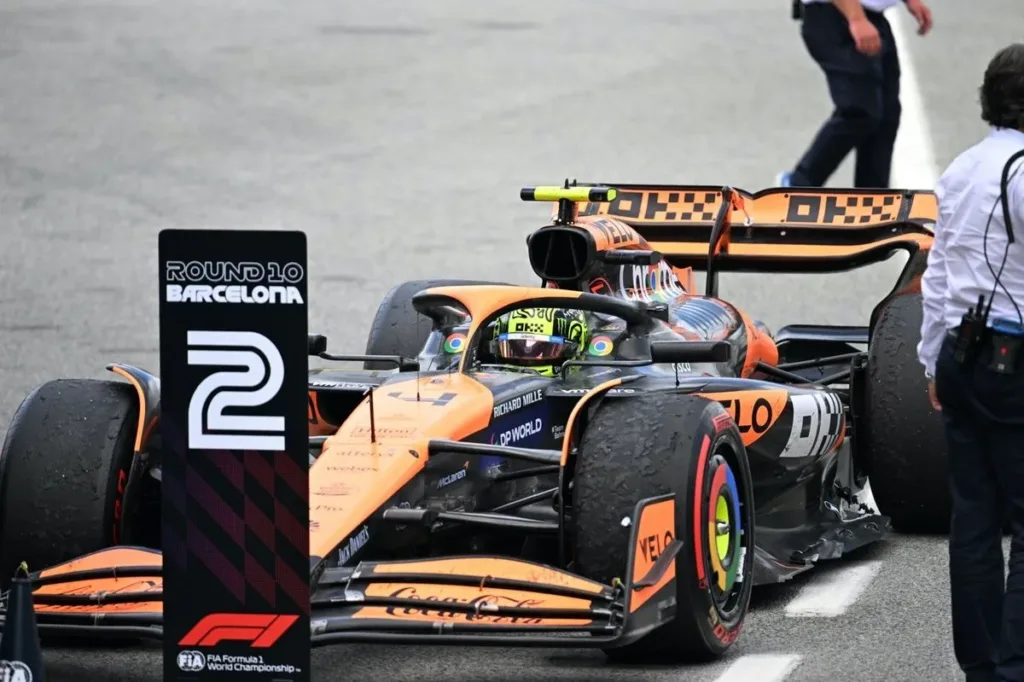Formula 1: Lando Norris Rues Tyre Strategy in Spanish Grand Prix
Yesterday in Formula 1’s Spanish Grand Prix, Lando Norris’s hopes of victory were effectively derailed by his start, but there was another critical phase later on that proved equally crucial (Formula 1 news, Formula 1 today).
With Norris earning himself a tyre offset against Max Verstappen, the advantage of fresher rubber in the final stint offered him a chance to overhaul the Red Bull for the lead. Norris duly put on a charge and managed to get himself just 2.2 seconds behind at the chequered flag, but there was a sense of regret afterwards about how he had handled things in that final 19-lap stint on softs (Formula 1 tyres).
The McLaren driver was left pondering whether or not he should have stuck to his guns with a tyre trick that he and the team have got on top of this year, involving bringing in fresh rubber slowly after a stop, as it performs much better over the long haul than if drivers gun it straight out of the pits (Formula 1 autocentre).
“It wasn’t the longest final stint, so I didn’t know if we were going to get to that time in the stint when I really start to catch. I think really, like the last three laps, the gaps were pretty big in terms of how much it was coming down. Yeah, it’s a hard one. I don’t know if maybe I pushed a bit too much in the beginning and struggled a little bit more at the end. It’s very difficult to judge these things,” said Norris.
What Norris is referring to is that, when he came out of the pits for the final dash to the flag, aware of the need to chase down a 7.696s gap to Verstappen, he elected to go on the attack. His first flying lap was a 1m17.377s, and then two laps later he put in the fastest lap of the race – a 1m17.115s – as he began his hunt.
However, pushing to the maximum like this may seem the obvious way to haul in the leader, but F1 teams and drivers spend time and effort mastering the different approach that is often better. Pirelli’s chief engineer Simone Berra explained that it is all about getting tyres into a window where they perform at their peak.
For Berra, the gains if drivers and teams can perfectly nail getting their tyre in the right window with this early stint treatment should not be underestimated. “It’s really team dependent but it [the difference] could be around half or one Psi,” he said. “So, it can be significant. If you are managing the tyres, you can keep the pressures and temperatures under control, and you can stabilise them where you would like.”
One classic example of this was Imola this year, where Norris took it easy early on in the final stint before his tyres hit their peak in another chase of Verstappen. The British driver will never know for sure if things would have turned out differently if he had taken things easier in the early laps of that final Spanish GP stint.
But with Formula 1 as competitive as it is now, it is clear that picking the right approach – gunning it early with tyres or bringing them in gently – has emerged as a clear defining factor in the fight for victory.
🔗 Source
